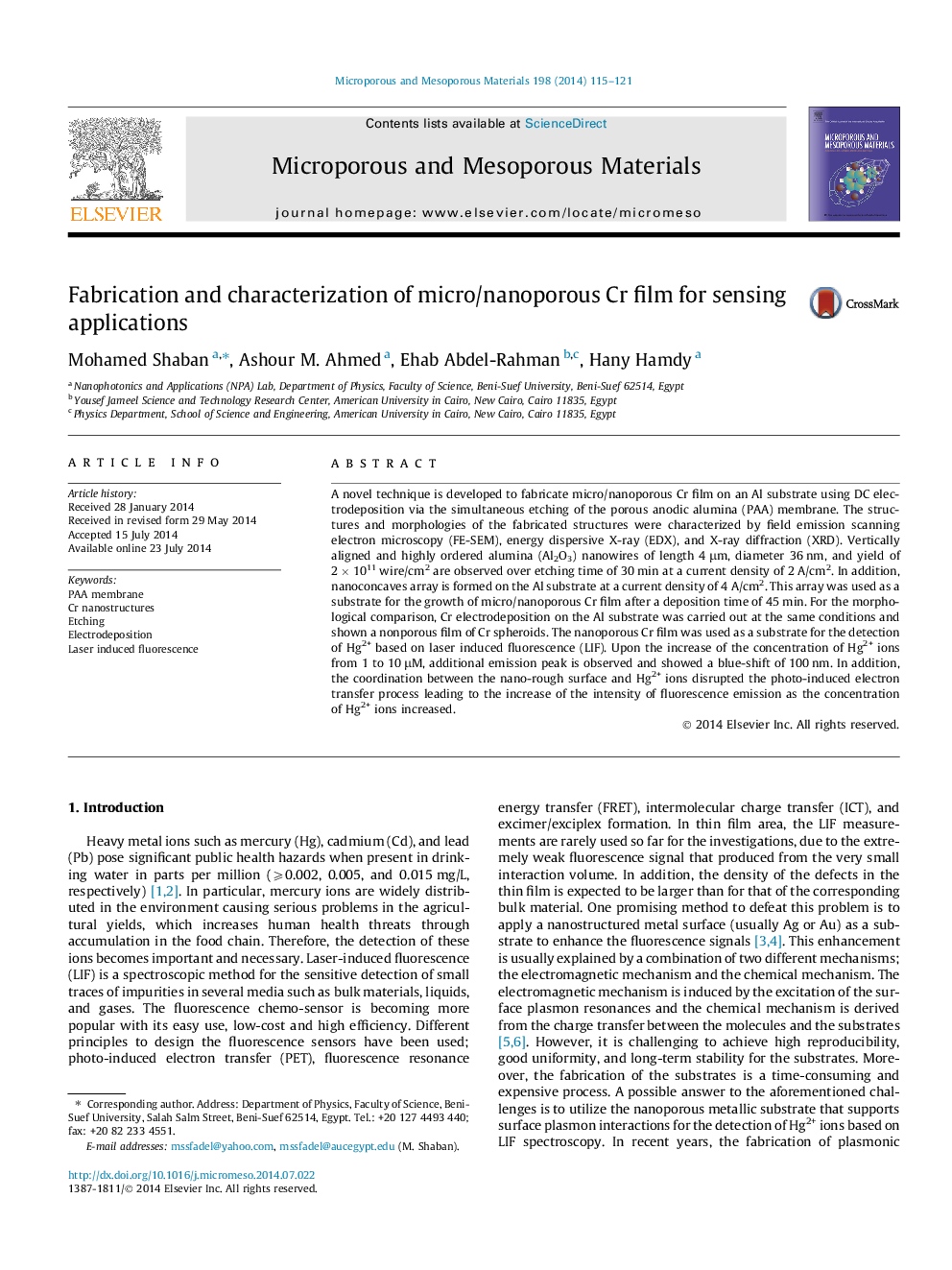| کد مقاله | کد نشریه | سال انتشار | مقاله انگلیسی | نسخه تمام متن |
|---|---|---|---|---|
| 72939 | 49038 | 2014 | 7 صفحه PDF | دانلود رایگان |
• Micro/nanoporous Cr film was deposited on Al substrate by DC electrodeposition.
• The Cr electrolyte shows double nature as an etching-electrodepositing electrolyte.
• Different morphologies of Al2O3 and Cr nanostructures are formed on Al substrate.
• The fabricated nanostructures were characterized by SEM, EDX and XRD.
• Nanoporous Cr film was used to detect Hg2+ ions using laser induced fluorescence.
A novel technique is developed to fabricate micro/nanoporous Cr film on an Al substrate using DC electrodeposition via the simultaneous etching of the porous anodic alumina (PAA) membrane. The structures and morphologies of the fabricated structures were characterized by field emission scanning electron microscopy (FE-SEM), energy dispersive X-ray (EDX), and X-ray diffraction (XRD). Vertically aligned and highly ordered alumina (Al2O3) nanowires of length 4 μm, diameter 36 nm, and yield of 2 × 1011 wire/cm2 are observed over etching time of 30 min at a current density of 2 A/cm2. In addition, nanoconcaves array is formed on the Al substrate at a current density of 4 A/cm2. This array was used as a substrate for the growth of micro/nanoporous Cr film after a deposition time of 45 min. For the morphological comparison, Cr electrodeposition on the Al substrate was carried out at the same conditions and shown a nonporous film of Cr spheroids. The nanoporous Cr film was used as a substrate for the detection of Hg2+ based on laser induced fluorescence (LIF). Upon the increase of the concentration of Hg2+ ions from 1 to 10 μM, additional emission peak is observed and showed a blue-shift of 100 nm. In addition, the coordination between the nano-rough surface and Hg2+ ions disrupted the photo-induced electron transfer process leading to the increase of the intensity of fluorescence emission as the concentration of Hg2+ ions increased.
Figure optionsDownload as PowerPoint slide
Journal: Microporous and Mesoporous Materials - Volume 198, 1 November 2014, Pages 115–121
